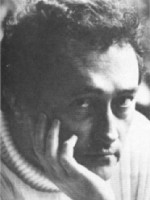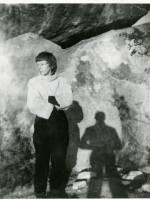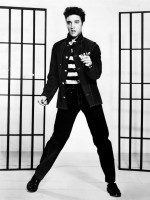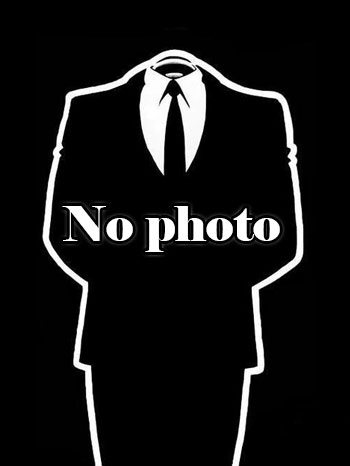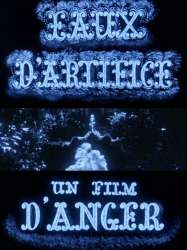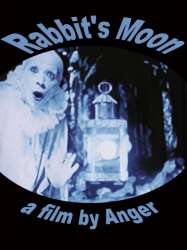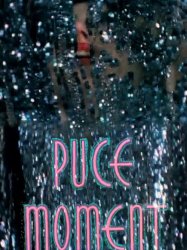Kenneth Anger is a Actor, Director, Scriptwriter, Producer, Director of Photography, Editor and Cinematography American born on 3 february 1927 at Santa Monica (USA)
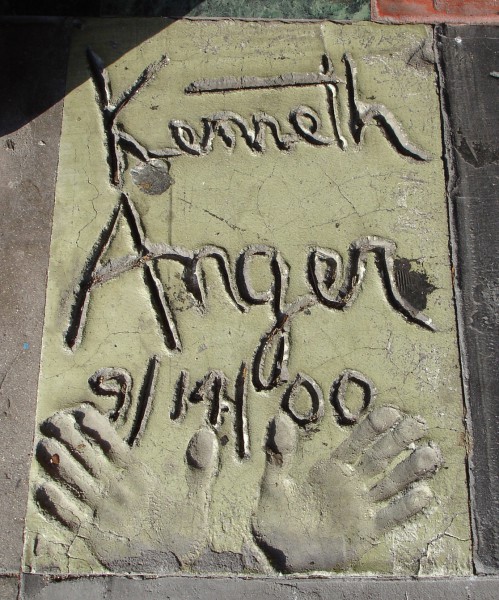
Kenneth Anger (born Kenneth Wilbur Anglemeyer; born February 3, 1927) is an American underground experimental filmmaker, actor and author. Working exclusively in short films, he has produced almost forty works since 1937, nine of which have been grouped together as the "Magick Lantern Cycle", and form the basis of Anger's reputation as one of the most influential independent filmmakers in cinema history. His films variously merge surrealism with homoeroticism and the occult, and have been described as containing "elements of erotica, documentary, psychodrama, and spectacle". Anger himself has been described as "one of America's first openly gay filmmakers, and certainly the first whose work addressed homosexuality in an undisguised, self-implicating manner", and his "role in rendering gay culture visible within American cinema, commercial or otherwise, is impossible to overestimate", with several being released prior to the legalization of homosexuality in the United States. He has also focused upon occult themes in many of his films, being fascinated by the notorious English occultist Aleister Crowley, and is a follower of Crowley's religion, Thelema.
Born to a middle-class family in Santa Monica, California, Anger would later claim to have been a child actor who appeared in the film A Midsummer Night's Dream (1935); the accuracy of this claim has come under dispute. He began making short films when he was ten years old, although his first film to gain any recognition, the homoerotic Fireworks (1947), would only be produced a decade later. The controversial nature of the work led to him being put on trial on obscenity charges, but he was acquitted. A friendship and working relationship began subsequently with pioneering sexologist Alfred Kinsey. Moving to Europe, Anger produced a number of other shorts inspired by the artistic avant-garde scene on the continent, such as Rabbit's Moon (released 1970) and Eaux d'Artifice (1953).
Returning to the United States in 1953, he set about working on several new projects, including the films Inauguration of the Pleasure Dome (1954), Scorpio Rising (1964), Kustom Kar Kommandos (1965), and the gossip book Hollywood Babylon (1965). Getting to know several notable countercultural figures of the time, including Tennessee Williams, Mick Jagger, Keith Richards, Jimmy Page, Marianne Faithfull and Anton LaVey, Anger involved them in his subsequent Thelemite-themed works, Invocation of My Demon Brother (1969) and Lucifer Rising (1972). Following his failure to produce a sequel to Lucifer Rising, Anger retired from filmmaking in the early 1980s, instead publishing the book Hollywood Babylon II (1982). At the dawn of the 21st century he once more returned to filmmaking, producing shorts for various film festivals and events.
Anger has described filmmakers such as Auguste and Louis Lumière, Georges Méliès, and Maya Deren as influences, and has been cited as an important influence on later film directors like Martin Scorsese, David Lynch and John Waters. He has also been described as having "a profound impact on the work of many other filmmakers and artists, as well as on music video as an emergent art form using dream sequence, dance, fantasy, and narrative".
Anger was born in Santa Monica, California, as Kenneth Wilbur Anglemyer on February 3, 1927. His father, Wilbur Anglemyer, was of German ancestry, and had been born in Troy, Ohio, while his disabled mother, Lillian Coler, who was the older of the two, claimed English ancestry. The pair had met at Ohio State College and after marrying had their first child, Jean Anglemyer, in 1918, followed by a second, Robert "Bob" Anglemyer, in 1921. That year they moved to Santa Monica to be near Lillian's mother, Bertha Coler, who herself had recently moved there. It was here that Wilbur got a job working as an electrical engineer at Douglas Aircraft, bringing in enough money so that they could live comfortably as a middle-class family.
Kenneth, their third and final child, was born in 1927, but growing up he would fail to get along with either his parents or his siblings. His brother Bob later claimed that being the youngest child, Kenneth had been spoilt by his mother and grandmother, and as such had become somewhat "bratty". His grandmother, Bertha, was a big influence on the young Kenneth, and indeed helped to maintain the family financially during the Great Depression of the 1930s. It was she who first took Kenneth to the cinema, to see a double bill of The Singing Fool and Thunder Over Mexico and also encouraged his artistic interests. She herself later moved into a house in Hollywood with another woman, Miss Diggy, who equally encouraged Kenneth. He developed an early interest in film, and enjoyed reading the movie tie-in Big Little books. He would later relate that "I was a child prodigy who never got smarter." He retrospected his attendance at the Santa Monica Cotillon where child stars were encouraged to mix with non-famous children and through this met Shirley Temple, whom he danced with on one occasion.
It was in 1935, he would later claim, that he had the chance to appear in a Hollywood film, taking the role of the Changeling Prince in the 1935 Warner Brothers film A Midsummer Night's Dream by Max Reinhardt and William Dieterle, a film that certainly influenced him, particularly in his later production of Rabbit's Moon. Set photographs and studio production reports (on file in the Warner Brothers collection at University of Southern California, and the Warner Bros. collection of studio key books at George Eastman House in Rochester, New York) in fact contradict Anger's claims, conclusively proving that the character was played by a girl named Sheila Brown. Anger's unofficial biographer, Bill Landis, remarked in 1995 that the Changeling Prince was definitely "Anger as a child; visually, he's immediately recognizable".
1937–46: First films
Anger's first film was created in 1937, when he was only ten years old. The short, titled Ferdinand the Bull, had been shot on the ends of 16mm film that had been left unused after the Anglemyer's family vacation to Yosemite National Park, where they had been making home movies with it. In Ferdinand the Bull, which has never been made publicly available, Kenneth dressed as a matador, wearing a cape, while two of his friends from the Boy Scouts played the bull. His second work, Who Has Been Rocking My Dreamboat, which Anger himself often considers to be his first proper film, was made up of footage of children playing during the summer, accompanied with popular songs by bands like the Ink Spots. Anger had created Who Has Been Rocking My Dreamboat in 1941, when he was fourteen, shortly before the Attack on Pearl Harbor and the subsequent entry of the United States into the Second World War, adding to the poignancy of this early work. The following year he produced another amateur film, Prisoner of Mars, which was heavily influenced by Flash Gordon, a series that he was a fan of. In this science fiction-inspired feature, he added elements taken from the Greek mythological myth of the Minotaur and himself played the protagonist, as well as constructing a small volcano in his back yard to create a form of home-made special effect. It is believed that many of these early films are lost, with Anger burning much of his previous work in 1967.
"I've always considered movies evil; the day that cinema was invented was a black day for mankind."
Kenneth Anger
In 1944, the Anglemyers moved to Hollywood to live with their grandmother, and Kenneth began attending Beverly Hills High School. It was here that he met Maxine Peterson, who had once been the stand-in for Shirley Temple, and he asked her, alongside another classmate and an old woman, to appear in his next film project, which he initially called Demigods but which was later retitled Escape Episode. Revolving partially around the occult, it was filmed in a "spooky old castle" in Hollywood and was subsequently screened at the Coronet Theatre on North La Cienega Blvd. in Los Angeles. Around this time, Anger also began attending the screenings of silent films held at Clara Grossman's art gallery, through which he met a fellow filmmaker, Curtis Harrington, and together they formed Creative Film Associates (CFA). Harrington is said to have introduced Anger to the work of Aleister Crowley. Crowley's philosophy of Thelema would exert a profound influence on the remainder of Anger's career. CFA was founded to distribute experimental films or "underground films" such as those of Maya Deren, John and James Whitney, as well as Anger's and Harrington's.
It was while at high school that he began to get interested in the occult, which he had first indirectly encountered through reading L. Frank Baum's Oz books as a child, with their accompanying Rosicrucian philosophies. Kenneth was very interested in the works of the French ceremonial magician Eliphas Levi, as well as Sir James Frazer's The Golden Bough, although his favorite writings were those of the English occultist Aleister Crowley. Crowley had founded a religion known as Thelema based upon a Spiritual experience that he had in Egypt in 1904, in which he claimed a being known as Aiwass had contacted him and recited to him The Book of the Law. Kenneth subsequently became a great fan of Crowley's work and converted to Thelema.
1947–49: Fireworks and early career
As Anger discovered his homosexuality, at a time when homosexual acts were still illegal in the United States, he began associating with the underground gay scene. At some point in the mid-1940s, he was arrested by the police in a "homosexual entrapment", after which he decided to move out of his parents' home, gaining his own sparse apartment largely financed by his grandmother, and abandoning the name Anglemyer in favor of Anger. He started attending the University of Southern California, where he studied cinema, and also began experimenting with the use of mind-altering drugs like cannabis and peyote. It was then that he decided to produce a film that would deal with his sexuality, just as other gay avant-garde film makers like Willard Maas were doing in that decade. The result was the short film Fireworks, which was created in 1947 but only exhibited publicly in 1948.
Upon release of the work, Anger was arrested on obscenity charges. He was acquitted, after the case went to the Supreme Court of California, which deemed it to be art rather than pornography. Anger made the claim to have been seventeen years old when he made it, despite the fact that he was actually twenty, presumably to present himself as more of an enfant terrible. A homoerotic work lasting only 14 minutes, Fireworks revolves around a young man (played by Anger himself) associating with various navy sailors, who eventually turn on him, stripping him naked and beating him to death, ripping open his chest to find a compass inside. Several fireworks then explode, accompanied by a burning Christmas tree and the final shot shows the young man lying in bed next to another topless man. Of this film, Anger would later state in 1966 that "This flick is all I have to say about being 17, the United States Navy, American Christmas and the fourth of July." He would continuously alter and adapt the film up until 1980, with it finally being distributed on VHS in 1986.
One of the first people to buy a copy of Fireworks was the sexologist Dr. Alfred Kinsey of the Institute for Sex Research. He and Anger struck up a friendship that would last until the doctor's death, during which time Anger aided Kinsey in his research. According to Anger's unofficial biographer Bill Landis, Kinsey became a "father figure" whom Anger "could both interact with and emulate." Meanwhile, in 1949 Anger began work on a film called Puce Women, which unlike Fireworks was filmed in color. It starred Yvonne Marquis as a glamorous woman going about her daily life; Anger would later state that "Puce Women was my love affair with Hollywood... with all the great goddesses of the silent screen. They were to be filmed in their homes; I was, in effect, filming ghosts." A lack of funding meant that only one scene was ever produced, which was eventually released under the title Puce Moment. That same year, Anger directed The Love That Whirls, a film based upon Aztec human sacrifice but, because of the nudity that it contained, it was destroyed by technicians at the film lab, who deemed it to be obscene.
1950–53: France, Rabbit's Moon and Eaux d'Artifice
In 1950. Anger moved to Paris, France, where he initially stayed with friends of his (who themselves had been forced to leave Hollywood after being blacklisted for formerly having belonged to trade union organisations). He would later remark that he travelled to the country after receiving a letter from the French director Jean Cocteau in which he told Anger of his admiration for Fireworks (shown in 1949 at Festival du Film Maudit in Biarritz, France). Upon arrival, Anger and Cocteau became friends, with the Frenchman giving the young protege his permission to make a movie of his ballet The Young Man and Death, although at the time there were no financial backers for the project. While in Paris he continued producing short films; in 1950 he started filming on Rabbit's Moon, which was also known as La Lune des Lapins and revolved around a clown who was staring up at the moon, in which a rabbit lived, something found within Japanese mythology. Anger produced 20 minutes of footage at the Films du Pantheon Studio in the city before he was rushed out of the studio, leaving the film uncompleted. He stored the footage in the disorganized archives of the Cinémathèque Française, and only collected it again in 1970, when he finally finished and released Rabbit's Moon. It was at the Cinémathèque Française that he was given by the head, Henri Langlois, prints of Sergei Eisenstein's Que Viva Mexico!, which he attempted to put into Eisenstein's original order.
"[D'Este was] a sexual pervert. There are very few things I call sexual perversion, but he liked to fuck goats, and that is technically a perversion."
Kenneth Anger
In 1953, he travelled to Rome, Italy where he planned to make a film about the sixteenth century occultist Cardinal d'Este. To do so, he began filming at the garden of the Villa d'Este in Tivoli, in which a lady in eighteenth century dress walked through the gardens, which featured many waterfalls (an allusion to the fact that d'Este allegedly sexually enjoyed urination), accompanied by the music of Vivaldi. This was supposedly going to be only the first of four scenes, but the others were not made; the resulting one-scene film was titled Eaux d'Artifice. As Anger's biographer Bill Landis remarked, "It's one of Anger's most tranquil works; his editing makes it soft, lush, and inviting. Eaux d'Artifice remains a secretive romp through a private garden, all for the masked figure's and the viewer-voyeur's pleasure."
1953–60: Inauguration of the Pleasure Dome and Hollywood Babylon
In 1953, soon after the production of Eaux d'Artifice, Anger's mother died and he temporarily returned to the United States in order to assist with the distribution of her estate. It was during this return that he began to once more immerse himself in the artistic scene of California, befriending the film maker Stan Brakhage, who had been inspired by Fireworks, and the two collaborated on producing a film, but it was confiscated at the film lab for obscenity and presumably destroyed. Around this time, two of Anger's friends, the couple Renate Druks and Paul Mathiesin held a party based upon the theme of 'Come As Your Madness'; Anger himself attended dressed in drag as the ancient Greek goddess Hekate. The party and its many costumes inspired Anger, who produced a painting of it, and asked several of those who attended to appear in a new film that he was creating – Inauguration of the Pleasure Dome. Inauguration, which was created in 1954, was a 38-minute surrealist work featuring many Crowleyan and Thelemite themes, with many of the various characters personifying various pagan gods such as Isis, Osiris and Pan. One of the actresses in the film was Marjorie Cameron, the widow of Jack Parsons, the influential American Thelemite who had died a few years previously, while Anger himself played Hecate. He would subsequently exhibit the film at various European film festivals, winning the Prix du Ciné-Club Belge and the Prix de l'Age d'Or as well as screening it in the form of a projected triptych at Expo 58, the World Fair held in Brussels in 1958.
In 1955, Anger and his friend Alfred Kinsey traveled to the derelict Abbey of Thelema in Cefalù, Sicily in order to film a short documentary titled Thelema Abbey. The abbey itself had been used by Aleister Crowley for his commune during the 1920s, and Anger restored many of the erotic wall-paintings that were found there as well as performing certain Crowleyan rituals at the site. The documentary was made for the British television series Omnibus, who later lost it. The following year Kinsey died, and Anger decided to return to Paris, and was described at this time as being "extremely remote and lonely".
In desperate need of money, Anger wrote a book titled Hollywood Babylon in which he collected together gossip regarding celebrities, some of which he claims he had been told. This included claiming (with no corroboration or citing of sources) that Rudolph Valentino liked to play a sexually submissive role to dominant women, that Walt Disney was a drug user, addicted to opiates (reflected in the character of Goofy, who's perpetually stoned on cannabis), as well as describing the nature of the deaths of Peg Entwistle and Lupe Vélez. The work was initially not published in the United States, instead the publisher was the French Jean Jacques Pauvert. A pirated (and incomplete) version was first published in the U.S. in 1965, with the official American version not being published until 1974. Now with some financial backing from the publication of Hollywood Babylon, his next film project was The Story of O; essentially a piece of erotica featuring a heterosexual couple engaged in sadomasochistic sexual activities, although it refrained from showing any explicit sexual images.
1961–65: Scorpio Rising and Kustom Kar Kommandos
In 1961, Anger once more returned to America, where he lived for a time with Marjorie Cameron. Meanwhile, he began work on a new feature, a film about the emerging biker subculture, which he titled Scorpio Rising. For this, he employed a biker named Richard McAuley, and filmed him and some of his friends messing around, adding to it scenes of McAuley, or "Scorpio" as he became known, desecrating a derelict church. Anger incorporated more controversial visuals into the piece, including Nazi iconography, nudity, and clips of the life of Jesus Christ taken from Family Films' The Living Bible: Last Journey to Jerusalem. In Scorpio Rising, Anger intercuts images of Christ from the cheap religious film with those of Scorpio. The whole film has a soundtrack made up of popular 1950s songs, including "Blue Velvet" by Bobby Vinton, "Torture" by Kris Jensen and "I Will Follow Him" by Little Peggy March. Anger himself described the film as "a death mirror held up to American culture... Thanatos in chrome, black leather, and bursting jeans." It immediately became popular on the underground cinema scene although was soon brought to court with complaints claiming that it was obscene. The all-female jury ruled in favor of the prosecutors, and Scorpio Rising was banned, although this ban was subsequently overturned on appeal to the California State Supreme Court.
With Scorpio Rising finished and Anger now living in San Francisco, he went to the Ford Foundation, which had just started a program of giving out grants to filmmakers. He showed them his ideas for a new artistic short, titled Kustom Kar Kommandos, which they approved of, and gave him a grant of $10,000. However, Anger spent much of the money on living expenses and making alterations to some of his earlier films, meaning that by the time he actually created Kustom Kar Kommandos, it was only one scene long. This homoerotic film involved various shots of a young man polishing a drag strip racing car, accompanied with a pink background and the song "Dream Lover" by The Paris Sisters. Soon after, Anger struck a deal that allowed Hollywood Babylon to be officially published in the United States for the first time, where it proved a success, selling two million copies during the 1960s, and around the same time Anger also translated Lo Duca's History of Eroticism into English for American publication.
1966–69: The hippie movement and Invocation of My Demon Brother
The mid-1960s saw the emergence of the hippie scene and the increasing use of the mind-altering drugs that Anger himself had been using for many years. In particular, the hallucinogen LSD, which at the time was still legal in the United States, was very popular, and in 1966 Anger released a version of his earlier film, Inauguration of the Pleasure Dome titled the "Sacred Mushroom Edition" which was screened to people while taking LSD, thereby heightening their sensory experience. By this time, Anger had become well known throughout the underground scene in the United States, and several cinemas across the country screened his better known films all in one event. With this growing fame, Anger began to react to publicity in much the same way as his idol Aleister Crowley had done, for instance describing himself as "the most monstrous moviemaker in the underground", a pun on the fact that Crowley had been labelled "the wickedest man in the world" by the British tabloids in the 1920s. Anger's fame on the underground circuit allowed him to increasingly associate with other celebrities, including Anton LaVey, the founder of the Church of Satan who named Anger as godfather to Zeena Schreck (LaVey's daughter). Despite Anger and LaVey's differing philosophies, the two became good friends and would remain so for many years. However, Anger also held a resentment towards certain celebrities, namely Andy Warhol, who at the time was achieving success not only in the art world but also in the underground film scene. In 1980 Anger threw paint over the front door of a house that Warhol had recently moved out of.
In 1966, Anger moved into the ground floor of a large nineteenth-century Victorian house in San Francisco known as the Russian Embassy. Around this time he began planning a new film titled Lucifer Rising echoing his Thelemite beliefs about the emerging Aeon of Horus. He tattooed the name of Lucifer upon his chest and began searching for a young man who could symbolically become Lucifer, "the Crowned and Conquering Child" of the new Aeon, for Lucifer Rising. While living at the Russian Embassy, he met and lived with various young men who could fit the position. Finally, he settled upon Bobby Beausoleil for the role of Lucifer. Beausoleil founded a band, the Magic Powerhouse of Oz, in order to record the music for the film. In 1967, Anger claimed that the footage which he had been filming for Lucifer Rising had been stolen, placing the blame on Beausoleil, who would deny the claims. Anger's unofficial biographer Bill Landis quotes Beausoleil who states, "what had happened was that Kenneth had spent all the money that was invested in Lucifer Rising" and that he therefore invented the story to satisfy the film's creditors. Beausoleil and Anger fell out, with the former getting involved with Charles Manson and his cult, the Family, eventually carrying out Manson's bidding by torturing and murdering Gary Hinman.
In the October 26, 1967 issue of Village Voice, Anger publicly reinvented himself by placing a full-page advert declaring "In Memoriam. Kenneth Anger. Filmmaker 1947–1967". He soon publicly reappeared, this time to claim that he had burned all of his early work. The following year he travelled to London where he first met John Paul Getty, Jr., who became Anger's patron, and where he also met and befriended Mick Jagger and Keith Richards, members of The Rolling Stones, as well as actress/model Anita Pallenberg. Anger then decided to use much of the footage created for Lucifer Rising in a new film of his, Invocation of My Demon Brother, which starred Beausoleil, LaVey, Jagger and Richards, as well as Anger himself, and the music for which had been composed by Jagger. It was released in 1969, and explored many of the Thelemic themes that Anger had originally intended for Lucifer Rising. The story of the film, its making, and the people involved are the inspiration for the novel "Sway", by Zachary Lazar.
1970–81: Lucifer Rising
Now, having used up much of the footage originally intended for Lucifer Rising for Invocation of My Demon Brother, Anger again set about to create "Lucifer Rising", a symbolic analogy of the coming Aeon of Horus as prophesied in the Thelemic sacred text, The Book of the Law. Anger persuaded the singer and actress Marianne Faithfull to appear in it. He also tried to convince his friend Mick Jagger to play the part of Lucifer in the film but Jagger refused. Instead he offered his brother Chris for the part. Anger accepted, but was not happy about it. Anger subsequently filmed eight minutes of film and showed it to the British National Film Finance Corporation who agreed to provide £15,000 in order for Anger to complete it – something that caused a level of outrage in the British press. With this money, he could afford to fly the cast and crew to both Germany and Egypt for filming. Anger befriended Led Zeppelin guitarist Jimmy Page around this time, the two sharing a great interest in Crowley. At Page's invitation, Anger travelled to Page's new home, Crowley's former residence Boleskine House located on the shores of Loch Ness in Scotland, to help the musician exorcise the building of what Page believed to be a headless man's ghost. Page subsequently agreed to produce the soundtrack for Lucifer Rising, and used the editing suite which was in the basement of his London home to shape the music which he produced. Anger later fell out with Page's wife Charlotte, who kicked him out of the house. In retaliation, Anger called a press conference in which he ridiculed Page and threatened to "throw a Kenneth Anger curse" on him. Page's music was dumped from the film and replaced in 1979 by music written and recorded by the imprisoned Bobby Beausoleil, with whom Anger had reconciled.
"[Lucifer is] a teenage rebel. Lucifer must be played by a teenage boy. It's type-casting. I'm a pagan and the film is a real invocation of Lucifer. I'm much realer than von Stroheim. The film contained real black magicians, a real ceremony, real altars, real human blood, and a real magic circle consecrated with blood and cum."
Kenneth Anger
Meanwhile, Anger, who moved to an apartment in New York City, took the footage that he had filmed for Rabbit's Moon in the 1950s, finally releasing the film in 1972, and again in a shorter version in 1979. Around the same time he also added a new soundtrack to Puce Moment and re-released it. It was also around this time that the publisher Marvin Miller produced a low budget documentary film based on Hollywood Babylon without Anger's permission, greatly angering him and leading him to sue. He also created a short film titled Senators in Bondage which was only available to private collectors and which has never been made publicly available, and had plans to make a film about Aleister Crowley titled The Wickedest Man in the World, but this project never got off the ground. In 1980, he holidayed with his friend, the playwright Tennessee Williams.
It was in 1981, a decade after starting the project, that he finally finished and released the 30-minute long Lucifer Rising. Based upon the Thelemite concept that mankind had entered a new period known as the Aeon of Horus, Lucifer Rising was full of occult symbolism, starring Miriam Gibril as the Ancient Egyptian goddess Isis and Donald Cammell as her consort Osiris, as well as Marianne Faithfull as the Biblical figure of Lilith and Leslie Huggins as Lucifer himself. Anger once again appeared in the film, starring as the Magus, the same role that he played in Invocation to My Demon Brother. He had surrealistically combined the roles that these characters played with footage of volcanoes, various ancient Egyptian temples and a Crowleyan adept reading from the man's texts.
1982–99: Retirement
Soon after the release of Lucifer Rising, a PBS documentary of Anger and his films was made, titled Kenneth Anger's Magick, which was directed by Kit Fitzgerald, who later recalled interviewing him in his New York flat on a very hot July evening, during which Anger revealed that he was so broke that he had been forced to sell his air conditioner. Anger himself considered producing other films that would continue on from Lucifer Rising in a series, and he began referring to his finished film as "Part I: Sign Language", to be followed by two further parts. Nonetheless, these projects would never be finished, and Anger himself would not produce any further films for nearly two decades. In need of money, Anger subsequently released Hollywood Babylon II in 1984, as well as continuing to screen his films at various festivals and at universities; around this time he began wearing an eyepatch to these public events, something likely due to him having been beaten up and getting a bruised eye, a story that he would bring up in various interviews, although partly changing who it was who had beaten him up in various versions of the story. In 1984, a notorious incident occurred when Anger was invited to appear on The Coca Crystal Show, however upon arriving at the studio he demanded that somebody pay for his taxi ride there, and when they refused, he attacked the talent coordinator Maureen Ivice and tried to drag her into his taxi, before she was rescued by other members of staff – Anger reportedly escaped the scene by flinging a $100 bill at the cab driver and screaming "GET ME OUT OF HERE!"
In 1986, he sold the video rights to his films, which finally appeared on VHS, allowing them to have greater publicity. The following year he attended the Avignon Film Festival in France where his work was being celebrated in commemoration of the fortieth anniversary of Fireworks. Soon after this, he appeared in Kenneth Anger's Hollywood Babylon, a BBC documentary for the Arena series directed by Nigel Finch. In 1991, Anger moved to West Arenas Boulevard in Palm Springs, where the British Film Institute sent Rebecca Wood to assist him in writing an autobiography, which was never actually produced. Instead, in 1995, Bill Landis, who had been an associate of Anger's in the early 1980s, wrote an unofficial biography of him, which Anger himself condemned, describing Landis as "an avowed enemy".
2000–present: Return to filmmaking
For twenty years from the early 1980s, Anger released no new material. In 2000, at the dawn of the new millennium, Anger began screening a new short film, the anti-smoking Don't Smoke That Cigarette, followed a year later by The Man We Want to Hang, which comprised images of Aleister Crowley's paintings that had been exhibited at a temporary exhibition in Bloomsbury, London. In 2004, he began showing Anger Sees Red, a short surrealistic film starring himself, and the same year also began showing another work, Patriotic Penis. He soon followed this with a flurry of other shorts, including Mouse Heaven, which consisted of images of Mickey Mouse memorabilia, Ich Will! and Uniform Attraction, all of which he showed at various public appearances. Anger's most recent project has been the Technicolor Skull with musician Brian Butler, described as a "magick ritual of light and sound in the context of a live performance", in which Anger plays the theremin, and Butler plays the guitar and other electronic instruments, behind a psychedelic backdrop of colors and skulls.
Anger makes an appearance in the 2008 feature documentary by Nik Sheehan about Brion Gysin and the Dreamachine titled FLicKeR. In 2009 his work was featured in a retrospective exhibition at the MoMA PS1 in New York City, and the following year a similar exhibition took place in London.
Anger has finished writing Hollywood Babylon III, but has not yet published it, fearing severe legal repercussions if he did so. Of this he has stated that "The main reason I didn't bring it out was that I had a whole section on Tom Cruise and the Scientologists. I'm not a friend of the Scientologists." The Church of Scientology has been known on several occasions to heavily sue those making accusations against them.
Source : Wikidata
Kenneth Anger

- Infos
- Photos
- Best films
- Family
- Characters
- Awards
Birth name Kenneth Wilbur Anglemyer
Nationality USA
Birth 3 february 1927 at Santa Monica (USA)
Death 11 may 2023 (at 96 years)
Nationality USA
Birth 3 february 1927 at Santa Monica (USA)
Death 11 may 2023 (at 96 years)
Kenneth Anger (born Kenneth Wilbur Anglemeyer; born February 3, 1927) is an American underground experimental filmmaker, actor and author. Working exclusively in short films, he has produced almost forty works since 1937, nine of which have been grouped together as the "Magick Lantern Cycle", and form the basis of Anger's reputation as one of the most influential independent filmmakers in cinema history. His films variously merge surrealism with homoeroticism and the occult, and have been described as containing "elements of erotica, documentary, psychodrama, and spectacle". Anger himself has been described as "one of America's first openly gay filmmakers, and certainly the first whose work addressed homosexuality in an undisguised, self-implicating manner", and his "role in rendering gay culture visible within American cinema, commercial or otherwise, is impossible to overestimate", with several being released prior to the legalization of homosexuality in the United States. He has also focused upon occult themes in many of his films, being fascinated by the notorious English occultist Aleister Crowley, and is a follower of Crowley's religion, Thelema.
Born to a middle-class family in Santa Monica, California, Anger would later claim to have been a child actor who appeared in the film A Midsummer Night's Dream (1935); the accuracy of this claim has come under dispute. He began making short films when he was ten years old, although his first film to gain any recognition, the homoerotic Fireworks (1947), would only be produced a decade later. The controversial nature of the work led to him being put on trial on obscenity charges, but he was acquitted. A friendship and working relationship began subsequently with pioneering sexologist Alfred Kinsey. Moving to Europe, Anger produced a number of other shorts inspired by the artistic avant-garde scene on the continent, such as Rabbit's Moon (released 1970) and Eaux d'Artifice (1953).
Returning to the United States in 1953, he set about working on several new projects, including the films Inauguration of the Pleasure Dome (1954), Scorpio Rising (1964), Kustom Kar Kommandos (1965), and the gossip book Hollywood Babylon (1965). Getting to know several notable countercultural figures of the time, including Tennessee Williams, Mick Jagger, Keith Richards, Jimmy Page, Marianne Faithfull and Anton LaVey, Anger involved them in his subsequent Thelemite-themed works, Invocation of My Demon Brother (1969) and Lucifer Rising (1972). Following his failure to produce a sequel to Lucifer Rising, Anger retired from filmmaking in the early 1980s, instead publishing the book Hollywood Babylon II (1982). At the dawn of the 21st century he once more returned to filmmaking, producing shorts for various film festivals and events.
Anger has described filmmakers such as Auguste and Louis Lumière, Georges Méliès, and Maya Deren as influences, and has been cited as an important influence on later film directors like Martin Scorsese, David Lynch and John Waters. He has also been described as having "a profound impact on the work of many other filmmakers and artists, as well as on music video as an emergent art form using dream sequence, dance, fantasy, and narrative".
Biography
1927–35: Early lifeAnger was born in Santa Monica, California, as Kenneth Wilbur Anglemyer on February 3, 1927. His father, Wilbur Anglemyer, was of German ancestry, and had been born in Troy, Ohio, while his disabled mother, Lillian Coler, who was the older of the two, claimed English ancestry. The pair had met at Ohio State College and after marrying had their first child, Jean Anglemyer, in 1918, followed by a second, Robert "Bob" Anglemyer, in 1921. That year they moved to Santa Monica to be near Lillian's mother, Bertha Coler, who herself had recently moved there. It was here that Wilbur got a job working as an electrical engineer at Douglas Aircraft, bringing in enough money so that they could live comfortably as a middle-class family.
Kenneth, their third and final child, was born in 1927, but growing up he would fail to get along with either his parents or his siblings. His brother Bob later claimed that being the youngest child, Kenneth had been spoilt by his mother and grandmother, and as such had become somewhat "bratty". His grandmother, Bertha, was a big influence on the young Kenneth, and indeed helped to maintain the family financially during the Great Depression of the 1930s. It was she who first took Kenneth to the cinema, to see a double bill of The Singing Fool and Thunder Over Mexico and also encouraged his artistic interests. She herself later moved into a house in Hollywood with another woman, Miss Diggy, who equally encouraged Kenneth. He developed an early interest in film, and enjoyed reading the movie tie-in Big Little books. He would later relate that "I was a child prodigy who never got smarter." He retrospected his attendance at the Santa Monica Cotillon where child stars were encouraged to mix with non-famous children and through this met Shirley Temple, whom he danced with on one occasion.
It was in 1935, he would later claim, that he had the chance to appear in a Hollywood film, taking the role of the Changeling Prince in the 1935 Warner Brothers film A Midsummer Night's Dream by Max Reinhardt and William Dieterle, a film that certainly influenced him, particularly in his later production of Rabbit's Moon. Set photographs and studio production reports (on file in the Warner Brothers collection at University of Southern California, and the Warner Bros. collection of studio key books at George Eastman House in Rochester, New York) in fact contradict Anger's claims, conclusively proving that the character was played by a girl named Sheila Brown. Anger's unofficial biographer, Bill Landis, remarked in 1995 that the Changeling Prince was definitely "Anger as a child; visually, he's immediately recognizable".
1937–46: First films
Anger's first film was created in 1937, when he was only ten years old. The short, titled Ferdinand the Bull, had been shot on the ends of 16mm film that had been left unused after the Anglemyer's family vacation to Yosemite National Park, where they had been making home movies with it. In Ferdinand the Bull, which has never been made publicly available, Kenneth dressed as a matador, wearing a cape, while two of his friends from the Boy Scouts played the bull. His second work, Who Has Been Rocking My Dreamboat, which Anger himself often considers to be his first proper film, was made up of footage of children playing during the summer, accompanied with popular songs by bands like the Ink Spots. Anger had created Who Has Been Rocking My Dreamboat in 1941, when he was fourteen, shortly before the Attack on Pearl Harbor and the subsequent entry of the United States into the Second World War, adding to the poignancy of this early work. The following year he produced another amateur film, Prisoner of Mars, which was heavily influenced by Flash Gordon, a series that he was a fan of. In this science fiction-inspired feature, he added elements taken from the Greek mythological myth of the Minotaur and himself played the protagonist, as well as constructing a small volcano in his back yard to create a form of home-made special effect. It is believed that many of these early films are lost, with Anger burning much of his previous work in 1967.
"I've always considered movies evil; the day that cinema was invented was a black day for mankind."
Kenneth Anger
In 1944, the Anglemyers moved to Hollywood to live with their grandmother, and Kenneth began attending Beverly Hills High School. It was here that he met Maxine Peterson, who had once been the stand-in for Shirley Temple, and he asked her, alongside another classmate and an old woman, to appear in his next film project, which he initially called Demigods but which was later retitled Escape Episode. Revolving partially around the occult, it was filmed in a "spooky old castle" in Hollywood and was subsequently screened at the Coronet Theatre on North La Cienega Blvd. in Los Angeles. Around this time, Anger also began attending the screenings of silent films held at Clara Grossman's art gallery, through which he met a fellow filmmaker, Curtis Harrington, and together they formed Creative Film Associates (CFA). Harrington is said to have introduced Anger to the work of Aleister Crowley. Crowley's philosophy of Thelema would exert a profound influence on the remainder of Anger's career. CFA was founded to distribute experimental films or "underground films" such as those of Maya Deren, John and James Whitney, as well as Anger's and Harrington's.
It was while at high school that he began to get interested in the occult, which he had first indirectly encountered through reading L. Frank Baum's Oz books as a child, with their accompanying Rosicrucian philosophies. Kenneth was very interested in the works of the French ceremonial magician Eliphas Levi, as well as Sir James Frazer's The Golden Bough, although his favorite writings were those of the English occultist Aleister Crowley. Crowley had founded a religion known as Thelema based upon a Spiritual experience that he had in Egypt in 1904, in which he claimed a being known as Aiwass had contacted him and recited to him The Book of the Law. Kenneth subsequently became a great fan of Crowley's work and converted to Thelema.
1947–49: Fireworks and early career
As Anger discovered his homosexuality, at a time when homosexual acts were still illegal in the United States, he began associating with the underground gay scene. At some point in the mid-1940s, he was arrested by the police in a "homosexual entrapment", after which he decided to move out of his parents' home, gaining his own sparse apartment largely financed by his grandmother, and abandoning the name Anglemyer in favor of Anger. He started attending the University of Southern California, where he studied cinema, and also began experimenting with the use of mind-altering drugs like cannabis and peyote. It was then that he decided to produce a film that would deal with his sexuality, just as other gay avant-garde film makers like Willard Maas were doing in that decade. The result was the short film Fireworks, which was created in 1947 but only exhibited publicly in 1948.
Upon release of the work, Anger was arrested on obscenity charges. He was acquitted, after the case went to the Supreme Court of California, which deemed it to be art rather than pornography. Anger made the claim to have been seventeen years old when he made it, despite the fact that he was actually twenty, presumably to present himself as more of an enfant terrible. A homoerotic work lasting only 14 minutes, Fireworks revolves around a young man (played by Anger himself) associating with various navy sailors, who eventually turn on him, stripping him naked and beating him to death, ripping open his chest to find a compass inside. Several fireworks then explode, accompanied by a burning Christmas tree and the final shot shows the young man lying in bed next to another topless man. Of this film, Anger would later state in 1966 that "This flick is all I have to say about being 17, the United States Navy, American Christmas and the fourth of July." He would continuously alter and adapt the film up until 1980, with it finally being distributed on VHS in 1986.
One of the first people to buy a copy of Fireworks was the sexologist Dr. Alfred Kinsey of the Institute for Sex Research. He and Anger struck up a friendship that would last until the doctor's death, during which time Anger aided Kinsey in his research. According to Anger's unofficial biographer Bill Landis, Kinsey became a "father figure" whom Anger "could both interact with and emulate." Meanwhile, in 1949 Anger began work on a film called Puce Women, which unlike Fireworks was filmed in color. It starred Yvonne Marquis as a glamorous woman going about her daily life; Anger would later state that "Puce Women was my love affair with Hollywood... with all the great goddesses of the silent screen. They were to be filmed in their homes; I was, in effect, filming ghosts." A lack of funding meant that only one scene was ever produced, which was eventually released under the title Puce Moment. That same year, Anger directed The Love That Whirls, a film based upon Aztec human sacrifice but, because of the nudity that it contained, it was destroyed by technicians at the film lab, who deemed it to be obscene.
1950–53: France, Rabbit's Moon and Eaux d'Artifice
In 1950. Anger moved to Paris, France, where he initially stayed with friends of his (who themselves had been forced to leave Hollywood after being blacklisted for formerly having belonged to trade union organisations). He would later remark that he travelled to the country after receiving a letter from the French director Jean Cocteau in which he told Anger of his admiration for Fireworks (shown in 1949 at Festival du Film Maudit in Biarritz, France). Upon arrival, Anger and Cocteau became friends, with the Frenchman giving the young protege his permission to make a movie of his ballet The Young Man and Death, although at the time there were no financial backers for the project. While in Paris he continued producing short films; in 1950 he started filming on Rabbit's Moon, which was also known as La Lune des Lapins and revolved around a clown who was staring up at the moon, in which a rabbit lived, something found within Japanese mythology. Anger produced 20 minutes of footage at the Films du Pantheon Studio in the city before he was rushed out of the studio, leaving the film uncompleted. He stored the footage in the disorganized archives of the Cinémathèque Française, and only collected it again in 1970, when he finally finished and released Rabbit's Moon. It was at the Cinémathèque Française that he was given by the head, Henri Langlois, prints of Sergei Eisenstein's Que Viva Mexico!, which he attempted to put into Eisenstein's original order.
"[D'Este was] a sexual pervert. There are very few things I call sexual perversion, but he liked to fuck goats, and that is technically a perversion."
Kenneth Anger
In 1953, he travelled to Rome, Italy where he planned to make a film about the sixteenth century occultist Cardinal d'Este. To do so, he began filming at the garden of the Villa d'Este in Tivoli, in which a lady in eighteenth century dress walked through the gardens, which featured many waterfalls (an allusion to the fact that d'Este allegedly sexually enjoyed urination), accompanied by the music of Vivaldi. This was supposedly going to be only the first of four scenes, but the others were not made; the resulting one-scene film was titled Eaux d'Artifice. As Anger's biographer Bill Landis remarked, "It's one of Anger's most tranquil works; his editing makes it soft, lush, and inviting. Eaux d'Artifice remains a secretive romp through a private garden, all for the masked figure's and the viewer-voyeur's pleasure."
1953–60: Inauguration of the Pleasure Dome and Hollywood Babylon
In 1953, soon after the production of Eaux d'Artifice, Anger's mother died and he temporarily returned to the United States in order to assist with the distribution of her estate. It was during this return that he began to once more immerse himself in the artistic scene of California, befriending the film maker Stan Brakhage, who had been inspired by Fireworks, and the two collaborated on producing a film, but it was confiscated at the film lab for obscenity and presumably destroyed. Around this time, two of Anger's friends, the couple Renate Druks and Paul Mathiesin held a party based upon the theme of 'Come As Your Madness'; Anger himself attended dressed in drag as the ancient Greek goddess Hekate. The party and its many costumes inspired Anger, who produced a painting of it, and asked several of those who attended to appear in a new film that he was creating – Inauguration of the Pleasure Dome. Inauguration, which was created in 1954, was a 38-minute surrealist work featuring many Crowleyan and Thelemite themes, with many of the various characters personifying various pagan gods such as Isis, Osiris and Pan. One of the actresses in the film was Marjorie Cameron, the widow of Jack Parsons, the influential American Thelemite who had died a few years previously, while Anger himself played Hecate. He would subsequently exhibit the film at various European film festivals, winning the Prix du Ciné-Club Belge and the Prix de l'Age d'Or as well as screening it in the form of a projected triptych at Expo 58, the World Fair held in Brussels in 1958.
In 1955, Anger and his friend Alfred Kinsey traveled to the derelict Abbey of Thelema in Cefalù, Sicily in order to film a short documentary titled Thelema Abbey. The abbey itself had been used by Aleister Crowley for his commune during the 1920s, and Anger restored many of the erotic wall-paintings that were found there as well as performing certain Crowleyan rituals at the site. The documentary was made for the British television series Omnibus, who later lost it. The following year Kinsey died, and Anger decided to return to Paris, and was described at this time as being "extremely remote and lonely".
In desperate need of money, Anger wrote a book titled Hollywood Babylon in which he collected together gossip regarding celebrities, some of which he claims he had been told. This included claiming (with no corroboration or citing of sources) that Rudolph Valentino liked to play a sexually submissive role to dominant women, that Walt Disney was a drug user, addicted to opiates (reflected in the character of Goofy, who's perpetually stoned on cannabis), as well as describing the nature of the deaths of Peg Entwistle and Lupe Vélez. The work was initially not published in the United States, instead the publisher was the French Jean Jacques Pauvert. A pirated (and incomplete) version was first published in the U.S. in 1965, with the official American version not being published until 1974. Now with some financial backing from the publication of Hollywood Babylon, his next film project was The Story of O; essentially a piece of erotica featuring a heterosexual couple engaged in sadomasochistic sexual activities, although it refrained from showing any explicit sexual images.
1961–65: Scorpio Rising and Kustom Kar Kommandos
In 1961, Anger once more returned to America, where he lived for a time with Marjorie Cameron. Meanwhile, he began work on a new feature, a film about the emerging biker subculture, which he titled Scorpio Rising. For this, he employed a biker named Richard McAuley, and filmed him and some of his friends messing around, adding to it scenes of McAuley, or "Scorpio" as he became known, desecrating a derelict church. Anger incorporated more controversial visuals into the piece, including Nazi iconography, nudity, and clips of the life of Jesus Christ taken from Family Films' The Living Bible: Last Journey to Jerusalem. In Scorpio Rising, Anger intercuts images of Christ from the cheap religious film with those of Scorpio. The whole film has a soundtrack made up of popular 1950s songs, including "Blue Velvet" by Bobby Vinton, "Torture" by Kris Jensen and "I Will Follow Him" by Little Peggy March. Anger himself described the film as "a death mirror held up to American culture... Thanatos in chrome, black leather, and bursting jeans." It immediately became popular on the underground cinema scene although was soon brought to court with complaints claiming that it was obscene. The all-female jury ruled in favor of the prosecutors, and Scorpio Rising was banned, although this ban was subsequently overturned on appeal to the California State Supreme Court.
With Scorpio Rising finished and Anger now living in San Francisco, he went to the Ford Foundation, which had just started a program of giving out grants to filmmakers. He showed them his ideas for a new artistic short, titled Kustom Kar Kommandos, which they approved of, and gave him a grant of $10,000. However, Anger spent much of the money on living expenses and making alterations to some of his earlier films, meaning that by the time he actually created Kustom Kar Kommandos, it was only one scene long. This homoerotic film involved various shots of a young man polishing a drag strip racing car, accompanied with a pink background and the song "Dream Lover" by The Paris Sisters. Soon after, Anger struck a deal that allowed Hollywood Babylon to be officially published in the United States for the first time, where it proved a success, selling two million copies during the 1960s, and around the same time Anger also translated Lo Duca's History of Eroticism into English for American publication.
1966–69: The hippie movement and Invocation of My Demon Brother
The mid-1960s saw the emergence of the hippie scene and the increasing use of the mind-altering drugs that Anger himself had been using for many years. In particular, the hallucinogen LSD, which at the time was still legal in the United States, was very popular, and in 1966 Anger released a version of his earlier film, Inauguration of the Pleasure Dome titled the "Sacred Mushroom Edition" which was screened to people while taking LSD, thereby heightening their sensory experience. By this time, Anger had become well known throughout the underground scene in the United States, and several cinemas across the country screened his better known films all in one event. With this growing fame, Anger began to react to publicity in much the same way as his idol Aleister Crowley had done, for instance describing himself as "the most monstrous moviemaker in the underground", a pun on the fact that Crowley had been labelled "the wickedest man in the world" by the British tabloids in the 1920s. Anger's fame on the underground circuit allowed him to increasingly associate with other celebrities, including Anton LaVey, the founder of the Church of Satan who named Anger as godfather to Zeena Schreck (LaVey's daughter). Despite Anger and LaVey's differing philosophies, the two became good friends and would remain so for many years. However, Anger also held a resentment towards certain celebrities, namely Andy Warhol, who at the time was achieving success not only in the art world but also in the underground film scene. In 1980 Anger threw paint over the front door of a house that Warhol had recently moved out of.
In 1966, Anger moved into the ground floor of a large nineteenth-century Victorian house in San Francisco known as the Russian Embassy. Around this time he began planning a new film titled Lucifer Rising echoing his Thelemite beliefs about the emerging Aeon of Horus. He tattooed the name of Lucifer upon his chest and began searching for a young man who could symbolically become Lucifer, "the Crowned and Conquering Child" of the new Aeon, for Lucifer Rising. While living at the Russian Embassy, he met and lived with various young men who could fit the position. Finally, he settled upon Bobby Beausoleil for the role of Lucifer. Beausoleil founded a band, the Magic Powerhouse of Oz, in order to record the music for the film. In 1967, Anger claimed that the footage which he had been filming for Lucifer Rising had been stolen, placing the blame on Beausoleil, who would deny the claims. Anger's unofficial biographer Bill Landis quotes Beausoleil who states, "what had happened was that Kenneth had spent all the money that was invested in Lucifer Rising" and that he therefore invented the story to satisfy the film's creditors. Beausoleil and Anger fell out, with the former getting involved with Charles Manson and his cult, the Family, eventually carrying out Manson's bidding by torturing and murdering Gary Hinman.
In the October 26, 1967 issue of Village Voice, Anger publicly reinvented himself by placing a full-page advert declaring "In Memoriam. Kenneth Anger. Filmmaker 1947–1967". He soon publicly reappeared, this time to claim that he had burned all of his early work. The following year he travelled to London where he first met John Paul Getty, Jr., who became Anger's patron, and where he also met and befriended Mick Jagger and Keith Richards, members of The Rolling Stones, as well as actress/model Anita Pallenberg. Anger then decided to use much of the footage created for Lucifer Rising in a new film of his, Invocation of My Demon Brother, which starred Beausoleil, LaVey, Jagger and Richards, as well as Anger himself, and the music for which had been composed by Jagger. It was released in 1969, and explored many of the Thelemic themes that Anger had originally intended for Lucifer Rising. The story of the film, its making, and the people involved are the inspiration for the novel "Sway", by Zachary Lazar.
1970–81: Lucifer Rising
Now, having used up much of the footage originally intended for Lucifer Rising for Invocation of My Demon Brother, Anger again set about to create "Lucifer Rising", a symbolic analogy of the coming Aeon of Horus as prophesied in the Thelemic sacred text, The Book of the Law. Anger persuaded the singer and actress Marianne Faithfull to appear in it. He also tried to convince his friend Mick Jagger to play the part of Lucifer in the film but Jagger refused. Instead he offered his brother Chris for the part. Anger accepted, but was not happy about it. Anger subsequently filmed eight minutes of film and showed it to the British National Film Finance Corporation who agreed to provide £15,000 in order for Anger to complete it – something that caused a level of outrage in the British press. With this money, he could afford to fly the cast and crew to both Germany and Egypt for filming. Anger befriended Led Zeppelin guitarist Jimmy Page around this time, the two sharing a great interest in Crowley. At Page's invitation, Anger travelled to Page's new home, Crowley's former residence Boleskine House located on the shores of Loch Ness in Scotland, to help the musician exorcise the building of what Page believed to be a headless man's ghost. Page subsequently agreed to produce the soundtrack for Lucifer Rising, and used the editing suite which was in the basement of his London home to shape the music which he produced. Anger later fell out with Page's wife Charlotte, who kicked him out of the house. In retaliation, Anger called a press conference in which he ridiculed Page and threatened to "throw a Kenneth Anger curse" on him. Page's music was dumped from the film and replaced in 1979 by music written and recorded by the imprisoned Bobby Beausoleil, with whom Anger had reconciled.
"[Lucifer is] a teenage rebel. Lucifer must be played by a teenage boy. It's type-casting. I'm a pagan and the film is a real invocation of Lucifer. I'm much realer than von Stroheim. The film contained real black magicians, a real ceremony, real altars, real human blood, and a real magic circle consecrated with blood and cum."
Kenneth Anger
Meanwhile, Anger, who moved to an apartment in New York City, took the footage that he had filmed for Rabbit's Moon in the 1950s, finally releasing the film in 1972, and again in a shorter version in 1979. Around the same time he also added a new soundtrack to Puce Moment and re-released it. It was also around this time that the publisher Marvin Miller produced a low budget documentary film based on Hollywood Babylon without Anger's permission, greatly angering him and leading him to sue. He also created a short film titled Senators in Bondage which was only available to private collectors and which has never been made publicly available, and had plans to make a film about Aleister Crowley titled The Wickedest Man in the World, but this project never got off the ground. In 1980, he holidayed with his friend, the playwright Tennessee Williams.
It was in 1981, a decade after starting the project, that he finally finished and released the 30-minute long Lucifer Rising. Based upon the Thelemite concept that mankind had entered a new period known as the Aeon of Horus, Lucifer Rising was full of occult symbolism, starring Miriam Gibril as the Ancient Egyptian goddess Isis and Donald Cammell as her consort Osiris, as well as Marianne Faithfull as the Biblical figure of Lilith and Leslie Huggins as Lucifer himself. Anger once again appeared in the film, starring as the Magus, the same role that he played in Invocation to My Demon Brother. He had surrealistically combined the roles that these characters played with footage of volcanoes, various ancient Egyptian temples and a Crowleyan adept reading from the man's texts.
1982–99: Retirement
Soon after the release of Lucifer Rising, a PBS documentary of Anger and his films was made, titled Kenneth Anger's Magick, which was directed by Kit Fitzgerald, who later recalled interviewing him in his New York flat on a very hot July evening, during which Anger revealed that he was so broke that he had been forced to sell his air conditioner. Anger himself considered producing other films that would continue on from Lucifer Rising in a series, and he began referring to his finished film as "Part I: Sign Language", to be followed by two further parts. Nonetheless, these projects would never be finished, and Anger himself would not produce any further films for nearly two decades. In need of money, Anger subsequently released Hollywood Babylon II in 1984, as well as continuing to screen his films at various festivals and at universities; around this time he began wearing an eyepatch to these public events, something likely due to him having been beaten up and getting a bruised eye, a story that he would bring up in various interviews, although partly changing who it was who had beaten him up in various versions of the story. In 1984, a notorious incident occurred when Anger was invited to appear on The Coca Crystal Show, however upon arriving at the studio he demanded that somebody pay for his taxi ride there, and when they refused, he attacked the talent coordinator Maureen Ivice and tried to drag her into his taxi, before she was rescued by other members of staff – Anger reportedly escaped the scene by flinging a $100 bill at the cab driver and screaming "GET ME OUT OF HERE!"
In 1986, he sold the video rights to his films, which finally appeared on VHS, allowing them to have greater publicity. The following year he attended the Avignon Film Festival in France where his work was being celebrated in commemoration of the fortieth anniversary of Fireworks. Soon after this, he appeared in Kenneth Anger's Hollywood Babylon, a BBC documentary for the Arena series directed by Nigel Finch. In 1991, Anger moved to West Arenas Boulevard in Palm Springs, where the British Film Institute sent Rebecca Wood to assist him in writing an autobiography, which was never actually produced. Instead, in 1995, Bill Landis, who had been an associate of Anger's in the early 1980s, wrote an unofficial biography of him, which Anger himself condemned, describing Landis as "an avowed enemy".
2000–present: Return to filmmaking
For twenty years from the early 1980s, Anger released no new material. In 2000, at the dawn of the new millennium, Anger began screening a new short film, the anti-smoking Don't Smoke That Cigarette, followed a year later by The Man We Want to Hang, which comprised images of Aleister Crowley's paintings that had been exhibited at a temporary exhibition in Bloomsbury, London. In 2004, he began showing Anger Sees Red, a short surrealistic film starring himself, and the same year also began showing another work, Patriotic Penis. He soon followed this with a flurry of other shorts, including Mouse Heaven, which consisted of images of Mickey Mouse memorabilia, Ich Will! and Uniform Attraction, all of which he showed at various public appearances. Anger's most recent project has been the Technicolor Skull with musician Brian Butler, described as a "magick ritual of light and sound in the context of a live performance", in which Anger plays the theremin, and Butler plays the guitar and other electronic instruments, behind a psychedelic backdrop of colors and skulls.
Anger makes an appearance in the 2008 feature documentary by Nik Sheehan about Brion Gysin and the Dreamachine titled FLicKeR. In 2009 his work was featured in a retrospective exhibition at the MoMA PS1 in New York City, and the following year a similar exhibition took place in London.
Anger has finished writing Hollywood Babylon III, but has not yet published it, fearing severe legal repercussions if he did so. Of this he has stated that "The main reason I didn't bring it out was that I had a whole section on Tom Cruise and the Scientologists. I'm not a friend of the Scientologists." The Church of Scientology has been known on several occasions to heavily sue those making accusations against them.
Usually with
Filmography of Kenneth Anger (9 films)
Actor
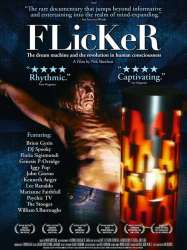
FLicKeR (2009)
Directed by Nik Sheehan
Origin Canada
Genres Documentary
Actors Kenneth Anger, Iggy Pop, Marianne Faithfull, Floria Sigismondi
Roles Self
Rating62%





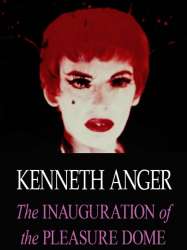 , 38minutes
, 38minutesDirected by Kenneth Anger
Origin USA
Genres Fantasy, Horror
Actors Marjorie Cameron Parsons, Curtis Harrington, Kenneth Anger
Roles Hecate
Rating69%





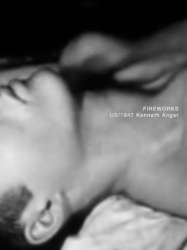
Fireworks (1947)
, 14minutesDirected by Kenneth Anger
Origin USA
Genres Drama, Erotic, Fantasy, Horror
Themes Films about sexuality, LGBT-related films, LGBT-related films, LGBT-related film
Actors Kenneth Anger
Roles Dreamer (uncredited)
Rating69%





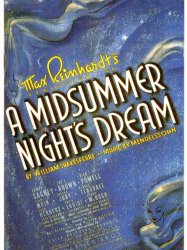
A Midsummer Night's Dream (1935)
, 2h13Directed by William Dieterle, Max Reinhardt
Origin USA
Genres Science fiction, Comedy, Romantic comedy, Fantasy, Romance
Themes Films about magic and magicians, Théâtre, Les fées, Films based on plays, Films based on works by William Shakespeare
Actors Ian Hunter, Verree Teasdale, Dick Powell, Mickey Rooney, Hobart Cavanaugh, Olivia de Havilland
Rating67%





Part one A beautiful young woman named Hermia (Olivia de Havilland) is in love with Lysander (Dick Powell) and wishes to marry him. Her father Egeus (Grant Mitchell), however, has instructed her to marry Demetrius (Ross Alexander), whom he has chosen for her. When Hermia refuses to obey, stating she is in love with Lysander, her father invokes before Duke Theseus of Athens (Ian Hunter) an ancient Athenian law that states a daughter must marry the suitor chosen by her father, or else face death. Theseus offers her another choice—to live a life of chastity as a nun and worship the goddess Diana.
Director
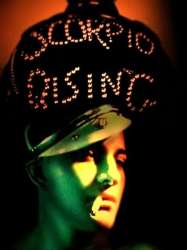
Scorpio Rising (1969)
, 30minutesDirected by Kenneth Anger
Origin USA
Genres Fantasy, Musical
Themes Films about sexuality, Transport films, LGBT-related films, Road movies, LGBT-related films, LGBT-related film
Actors Bruce Byron
Rating67%





"Une vision transcendee du mythe du motard americain. La machine comme totem, du jouet a la terreur. Thanatos en chrome et cuir noir."
 , 38minutes
, 38minutesDirected by Kenneth Anger
Origin USA
Genres Fantasy, Horror
Actors Marjorie Cameron Parsons, Curtis Harrington, Kenneth Anger
Rating69%






Fireworks (1947)
, 14minutesDirected by Kenneth Anger
Origin USA
Genres Drama, Erotic, Fantasy, Horror
Themes Films about sexuality, LGBT-related films, LGBT-related films, LGBT-related film
Actors Kenneth Anger
Rating69%





Scriptwriter

Scorpio Rising (1969)
, 30minutesDirected by Kenneth Anger
Origin USA
Genres Fantasy, Musical
Themes Films about sexuality, Transport films, LGBT-related films, Road movies, LGBT-related films, LGBT-related film
Actors Bruce Byron
Roles Writer
Rating67%





"Une vision transcendee du mythe du motard americain. La machine comme totem, du jouet a la terreur. Thanatos en chrome et cuir noir."

Kustom Kar Kommandos (1965)
, 3minutesDirected by Kenneth Anger
Origin USA
Genres Musical
Roles Writer
Rating62%





 , 38minutes
, 38minutesDirected by Kenneth Anger
Origin USA
Genres Fantasy, Horror
Actors Marjorie Cameron Parsons, Curtis Harrington, Kenneth Anger
Roles Writer
Rating69%





 Connection
Connection
